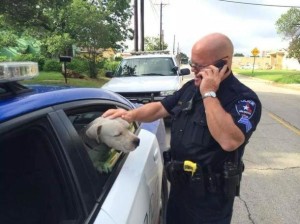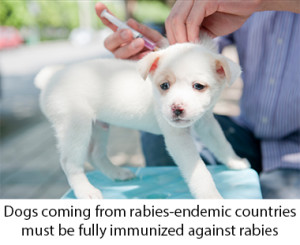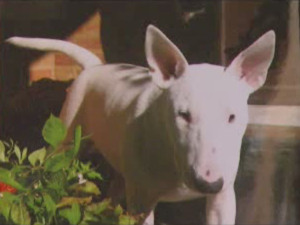Real life makes for great movies.
Just in the last 5 years, moviegoers have been enthralled with Social Network, Secretariat, Black Hawk Down, Extremely Loud and Incredibly Close, Argo and Zero Dark Thirty, all films based on real events. It’s tempting to conjecture that if the travails of the dog fancy over the last twenty years were ever made into a film adaptation, surely the movie would fall within the genre of a “spaghetti western.” Why? Because the line between heroes and villains is blurred, morality is flexible, and the remaking of an American tradition is happening before our eyes.

With “spaghetti westerns,” Italian filmmakers repackaged the classic American western and influenced the way an entire generation looked at traditional stereotypes. In much in the same way, the animal rights movement challenged the public’s perception of all dog breeders by painting ethical ones with the same broad brush used to color substandard breeders. To hear radical groups say it these days, all breeders (good, bad or ugly) are responsible for pet overpopulation, the deaths of millions of shelter dogs, poorly bred dogs living in agony, and climate change.
 For years, images of caged and sad-eyed shelter dogs have beamed nightly into our bedrooms through our television sets, and the public responded with donations that have made at least one humane society very rich, indeed.
For years, images of caged and sad-eyed shelter dogs have beamed nightly into our bedrooms through our television sets, and the public responded with donations that have made at least one humane society very rich, indeed.
Entrusted to oversee the welfare of animals in the United States, the Animal and Plant Health Inspection Service (APHIS) of the Department of Agriculture received complaints from a public concerned about the humane treatment of pets bred in commercial facilities and sold in pet shops, especially those sold over the Internet, a venue never imagined when the Animal Welfare Act was written over forty years ago.
To handle these complaints and be compliant with the Animal Welfare Act’s original intent, APHIS responded in May 2012 with a proposed rule to narrow the definition of a “retail pet store,” and license and regulate internet-based breeders and sellers who acted as dealers. The agency invited comments for 90 days during which time it received 75,584 individual comments, 134,420 signed form letters, and 213,000 signatures on petitions submitted by groups supporting or opposing the proposed rule.
Ethical breeders, already battle weary from poorly written legislation affecting them, cringed at yet another regulation intended to target substandard breeders, but one that would probably impact them, as well. Nevertheless, they wrote letters, participated in conference calls, and were among the individuals who provided 70,000 signatures to a petition submitted by the AKC expressing concern over the future of responsibly bred dogs and small/hobby breeders.
And then they nervously waited.
When the final rule was announced during a USDA-hosted conference call on September 10th, the fancy felt its greatest fears realized. Despite a Herculean effort to inform USDA about the unintended consequences of a regulation aimed at commercial breeders, the final rule was virtually unchanged from the original language.
Hobby breeders were incredulous. How could this happen to them? They were law abiding. They spent countless hours reviewing genotypes and phenotypes before selecting a suitable breeding pair. They sacrificed to run health tests, slept in their dogs’ whelping boxes, carefully screened potential homes, and cried their eyes out when saying goodbye to a puppy they had raised.
As verbiage of the final document “sank in,” hobby breeders read it and found themselves mostly confused. How could they meet standards worded for breeders with different realities?
To the detriment of the hobby breeder, a last minute document posted by the USDA has gone largely unnoticed, and consequently, it’s done little to dispel the depression and outrage felt by the dog community. This document must be regarded by dog fanciers before they’re ready to “chuck it all in.”
In the finest tradition of a particularly popular “Spaghetti Western,” let’s review “The Good, The Bad, and The Ugly” of this new regulation, and the document which followed it, the Retail Pet Store docket.
The Good:
NAIA legislative director, Julian Prager, JD, reviewed the Retail Pet Store docket, a 91 page document intended to help clarify the USDA’s position of the new rule, and interprets it as evidence that hobby and residential breeders are exempt from its worst fears of regulation.
Of particular interest to hobby breeders is that while all dealers must be licensed by APHIS, not every breeder is a dealer. Key in determining whether one is a “dealer” or a hobby breeder is the purpose of the sale of a dog or a puppy.
- If a breeding is done to maintain bloodlines or produce working dogs, a license is not required;
- Shipping semen, a bitch, or an animal for breeding purposes does not require licensing.
- Any number of breeding females may be owned as long as the sale of a dog or puppy takes place face-to-face, and the buyer, seller and dog are in the same place at the same time at the time of the sale or delivery of the dog, and the location of the transaction can be anywhere;
- The person who takes possession of the dog at the time of sale or delivery is the buyer even if they’re not the ultimate owner. This is important to know if the ultimate owner is sick, elderly or disabled and needs someone to act on their behalf;
- The rule won’t limit the number of dogs one can own/co-own, breed or sell. It’s designed to regulate under the federal Animal Welfare Act (AWA) those who sell dogs as pets over the Internet or “sight-unseen.” Remember, this only applies to the dogs on one’s premises.
The reasoning for this language is one responsible dog breeders can get behind: When the Office of Inspector General audit found that over 80 percent of sampled breeders weren’t licensed under the Animal Welfare Act because they sold pets over the Internet (thereby claiming “retail pet store” status), the Department of Agriculture realized that this involved a lot of dogs. Tightening up regulations on Internet sales impacts the kind of breeders who hurt the ethical ones. Revising the definition of “retail pet store” brings dogs purchased through “sight unseen” transactions under the protection of regulation so that they receive basic standards of care. The buyer also benefits by personally seeing a dog before purchasing it and ensuring that it is healthy.
The Bad:
The ambiguity of the regulation on certain issues requires greater clarification:
- The rule seems to indicate that if a dog is sold as a breeding prospect, to maintain bloodlines, or as a working dog (hunting, herding, or security, for example) a breeder is exempt from requiring licensure. If a dog is sold as a pet, however, a breeder isn’t exempt. It’s significantly important, therefore, that a breeder is able to demonstrate their purpose in selling a puppy, but how is this done, and what kind of “evidence” will be indicative of compliance?
- Of concern is that this regulation might encourage a bit of “creative” truth telling. If a breeder determines that a puppy isn’t a breeding prospect, they have the option of putting a limited registration on the dog to preserve the gene pool – but at the same time, they’ve now invited APHIS to investigate their sale because they’ve designated the puppy as “pet quality” and the new regulation stipulates that only “dealers” can market or sell or a puppy sold “as a pet;”
- Further explanation is needed on the issue of puppies received in lieu of a stud fee or for the receipt of a puppy back from the sale of a female on a breeder’s terms. Although these don’t qualify for the exemption based on owning four or fewer breeding females and selling puppies born and raised on a breeder’s premises, APHIS might find their sale exempt under other provisions of the AWA regulations;
- What about the sale of dogs whelped or born by C-section at a veterinary practice? As long as the dogs are sold in face-to-face transactions, this is, one supposes, a moot point – but who decides?
- Leaving to an APHIS inspector the determination of what a “breeding female” is is entirely too subjective. Ideal breeding ages vary from breed to breed, and former show dogs are sometimes left intact by breeders who feel it’s the best interest of their dog to avoid surgery;
- Breeders are now hamstrung from selling puppies to “repeat customers” living out-of-state, buyers with whom they’ve had a relationship because they previously owned a dog bred by the breeder and demonstrated themselves as ideal homes; Conversely, if an out-of-state buyer wishes to purchase a puppy from a breeder they’ve come to trust, their puppy will cost a lot more when additional travel and hotel expenses are factored in;
- If one must open their home to an APHIS inspection, the regulation requires that the breeder be at home five days a week during business hours. This is problematic for the person who works or attends dog shows.

The Ugly:
- The new rules expand the influence of USDA/APHIS at a time when the public is reeling from revelations of privacy leeks and admissions of government scrutiny of the private sector;
- APHIS estimates that between 2,600 and 4,640 dog breeders will be affected by the new rule. It’s likely that more than a few will have to become licensed breeders in order to comply with the new regulation which is sure to generate additional income for APHIS. APHIS has suggested that even at the highest end of the cost of a license (an estimated $760 for a breeder with gross revenues in excess of $200,000), they point out that it’s still less than the price of many purebred dogs. Using their own figures and logic, however, that means that if one were to multiply the “high end” of the range of affected breeders (4,640) by $760, this is an additional income of $3,526,400.00 for the Department of Agriculture, hardly chump change even for a government agency. In that light, a cynical person might be tempted to think of another “Spaghetti Western:” A Fistful of Dollars;
- During the USDA conference call, the answer to many questions posed was that APHIS officials would “determine [them] on a case-by-case basis.” Given human nature, this kind of ambiguity invites charges of potential shenanigans – preferential treatment, cronyism, maybe even potential pay-offs; It is an ugly thing to think, but there will be some who will think it;
- APHIS has indicated that it will use various methods to access publicly available information to identify breeders they determine may need an AWA commercial breeding license. These methods include “reviewing” the marketing and promotional materials of breeders and Internet retailers. If breeders become fearful of non-compliance, if not government intrusion in their lives, what financial impact will this have on the sites of national breed clubs, the AKC or even pet-finder sites?
- Given that there are former animal rights activists now in the employ of the USDA, law-abiding, ethical breeders feel vulnerable to the anti-breeder bias of people in high places, and with vague rules and a lack of specific guidelines in certain situation, there is real concern about discrimination;
As Don Miguel Rojo said in A Fistful of Dollars, “A man’s life in these parts often depends on a mere scrap of information.” There are dozens of nuances in this regulation that need to be clarified, and the NAIA will be reviewing them more in depth in the coming weeks.
~ Susi Szeremy, 10/11/13
 A writer and editor by profession, Susi is also the creator of KnobNots pet safety signs, as well as the dog blog, DogKnobit. An owner/breeder/handler of Pulik since 1978, she is active in the dog fancy where she is a co-chair of Judges Education for the Puli Club of America.
A writer and editor by profession, Susi is also the creator of KnobNots pet safety signs, as well as the dog blog, DogKnobit. An owner/breeder/handler of Pulik since 1978, she is active in the dog fancy where she is a co-chair of Judges Education for the Puli Club of America.
 Animal Policy
Animal Policy  No Comments
No Comments 








 For years, images of caged and sad-eyed shelter dogs have beamed nightly into our bedrooms through our television sets, and the public responded with donations that have made at least one humane society very rich, indeed.
For years, images of caged and sad-eyed shelter dogs have beamed nightly into our bedrooms through our television sets, and the public responded with donations that have made at least one humane society very rich, indeed.
